Why Italy's south is better than the north
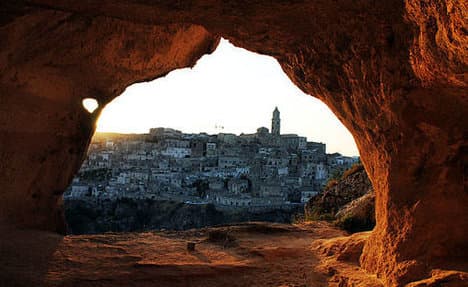
Italy's south doesn't always get good press, but here are a few reasons why our readers love life in the country's mezzogiorno.
Italy's southern regions, which include Puglia, Campania, Basilicata, Calabria, Sicily and Sardinia, are most often in the news for negative reasons. Reports repeatedly find that the region is much poorer than the north, lacks infrastructure and work opportunities. and notoriously has bigger problems with organised crime.
There's also said to be a north-south divide when it comes to things like healthcare and education.
Despite all this though, the region is becoming an ever more popular destination for visitors as well as those looking to relocate - especially those looking for a mild climate and a relaxed lifestyle.
In reality, the region has plenty to offer. We asked the experts - locals and our readers - about the ways in which Italy's south trumps the wealthier north every time.
Better beaches
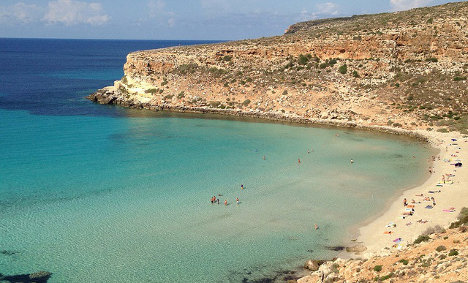
Rabbit beach in Lampedusa, Sicily, is ranked Italy's best on TripAdvisor. Photo: Marco Molino
Our readers love southern Italy's beaches...and they're not the only ones. Eight out of TripAdvisor's top 10 beaches across Italy are located in the south and a whopping six can be found on the sun-kissed islands of Sicily and Sardinia.
READ ALSO: Ten percent of the world's best beaches are in Italy
Whether you like your beaches high and rocky or low and sandy, you're never too far from a great beach on the islands, which between them boast 2849km of (largely) unspoiled coastline. On top of that, you have the coastline that stretches from Campania to Calabria, not forgetting the crystal-clear waters of Puglia.
Mind-blowing fact: Even though it is the smaller island, Sardinia's jagged coastline (1,849km) is almost twice as long as Sicily's (1,000km).
Tourist attractions
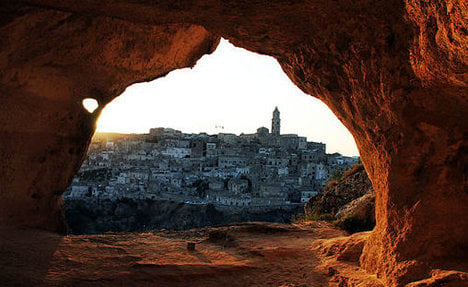
The Sassi Di Matera, ancient cave dwellings. Photo: Maryn Ve
In addition to its great beaches, southern Italy contains over 25 percent of all the country's Unesco heritage sites, boasting a wealth of natural, volcanic wonders as well as cultural sites revealing the rich tapestry of the area's human history.
But in spite of such great resources, tourist revenues in southern Italy were less than half of those for central and northern Italy in 2013. But things might be changing...
The richness of the area is slowly being appreciated by first-time tourists and seasoned Italophiles who want to avoid the more crowded destinations like Rome, Florence and Venice.
A recent success story for southern tourism comes from the small town of Matera, in Basilicata.
The town went from being one of the poorest in Italy to the European Capital of Culture for 2019. The town has also attracted Hollywood, with scenes from Wonder Woman, The Passion of the Christ and the latest James Bond being filmed there. Perhaps Matera's success can prove a catalyst for tourism across the south.
Food and drink

Pizza would be miserable without mozzarella. Pic: Jeffery W
Up until the 1860s, the economy of the southern Italy largely revolved around a feudal agricultural system. Now completely modernized, the south is reaping the benefits of its not-so-distant agricultural past.
The area is home to a wide array of wonderful and unique produce, and is a place where where ancient traditions are still alive and well – not least at the table.
Testament to its thriving food scene, 79 of Italy's 221 products that are protected by geographic labels of origin are produced in the south, including buffalo mozzarella, which our reader Des Hubbard referred to as "the cream of the crop."
READ ALSO: What is it that makes living in Italy so healthy?
A world without mozzarella would be a very sad place indeed, but the south is also full of less well-known wonders like Taurisi red wine, which owes its existence to the volcanic soils around Mount Vesuvius. Readers also expressed a certain fondness for the Calabrian spicy sausage, 'Nduja.
Reader Jill Manno singled out Sicilian cuisine, saying she preferred it “because of its simplicity, freshness, and spartan use of salt."
Friendlier people
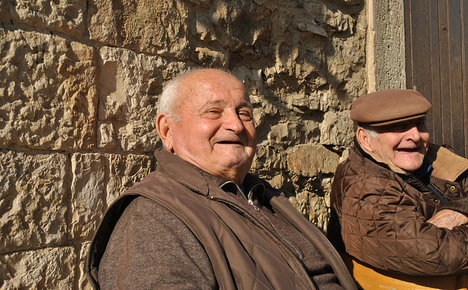
Two old men in Puglia share a joke with a passer-by. Photo: Dauno Settantatre / Flickr
A lot of our readers comments suggested that people in the south of Italy were more hospitable and friendlier than northern Italians.
Yuki Ling claimed that the Sicilians she knew were "much warmer and friendlier" than northern Italians, and that they "did not expect anything in return when helping you."
This is not just a commonly held perception. It is is also held to be true by Italians across the peninsular. Popular opinion states that the country's northern inhabitants are much “colder” than their southern counterparts.
Regional stereotypes such as this exist in every country and there is really only subjective data backing them up.
While such a widely held belief probably has at least a grain of truth to it, we're sure there are plenty of cheerful and friendly northern Italians too...
Green energy
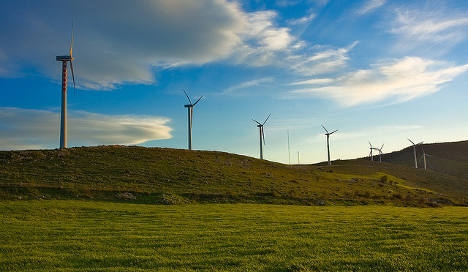
There are more than 6,000 turbines across southern Italy. Photo: Sebastiano Pitruzello
Did you know that southern Italy is a world leader in green energy?
According to a report by Svimez, 66 percent of southern power was produced using renewable technology. Thanks to its rugged topography, southern Italy accommodates more than 6,000 wind turbines.
The south's green credentials can only improve in the future too. Both geothermal energy and solar power are massively underused across southern Italy - in an area where they have the potential to provide clean and cheap energy to a large portion of the population.
READ ALSO: From football to tiramisu: A look at Italy's deepest rivalries
The use of green energy down south is reflected in the quality if the air. Data compiled by environmental watchdog Legambiente shows a huge concentration of cities in the centre-north that exceeded safe quotas of air pollution.
Residents down south can breathe a little easier.
The passeggiata (evening stroll)
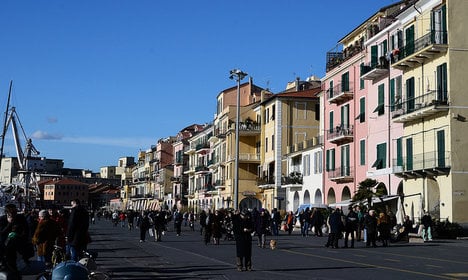
A seaside passeggiata hot spot in full swing. Photo: Alessandro Flickr
Our readers also suggested the passeggiata, or evening stroll, a noble Italian tradition that has all but disappeared from the northern provinces.
The passeggiata is usually taken between 5pm and 7pm, with the simple objective of seeing people you know and being seen by others.
It's easy to join in the fun if you live in the south: just put on some nice clothes and then head out to one of your town's passeggiata hot spots, usually to be found along a main road in the city centre or the sea front.
The evening stroll is the perfect opportunity to catch up with friends and is a great opportunity to spy on your ex, or even attempt to “bump into” your latest crush.
People living in the south happily reported that the tradition is still very much alive and well, providing them with the perfect opportunity to socialize and catch some light exercise before dinner.
Il riposo (the afternoon nap)
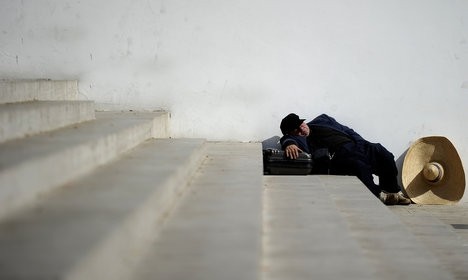
The riposo is alive and well down south. Photo: Filippo Monteforte / AFP
Another suggestion from our readers was the mid-afternoon nap or riposo, which is still taken after lunch, in many areas across southern Italy.
In fact, one mayor in Campania was so eager to protect his snoozing citizens that he banned dogs from barking during the hours of the riposo.
The reasons for this differing sleep culture in southern Italy are numerous. Napping allows you to avoid the afternoon heat, stuff yourself at lunch without worrying about feeling drowsy at work and keeps you fresh for your evening passeggiata.
READ ALSO: Five surprisingly great places to live in Italy
In many areas of southern Italy, the shops still close and shutters come down for a good couple of hours to accommodate the longstanding tradition, much to the ire of impatient shoppers who forget it's nap-time.
While the idea of getting some sleep in the middle of the day is probably enough to provoke outrage from anyone living more than 50 degrees north of the equator, it actually has a whole range of health benefits. A 2007 study showed that midday napping reduced the rate of coronary mortality by 37 percent.
Longevity
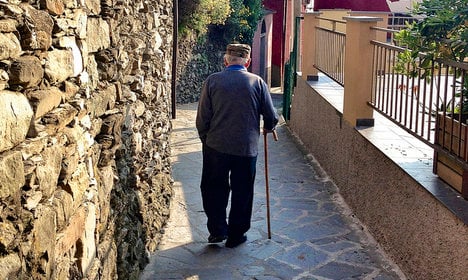
An old man heads off for a healthy passeggiata. Photo: Simon Collison / Flickr
Which brings us nicely to living longer, another thing people in Italy's much maligned southern regions do very well. Especially the women.
In southern Italy women live to an average of 80.6 years, compared to the national average of 79.8. The average life expectancy in the south of Italy is among the highest in Europe, and Sicily can even boast a village of centenarians.
Clearly, the combined effects of the south's good food, lunchtime naps, clean air, great beaches and social evening strolls can do wonders for you.
READ ALSO: Italian word of the day: Mezzogiorno
Do you live in the south of Italy? Or do you visit regularly? Send us an email and let us know what you think about life in the region.
A version of this article was first published in August 2015.
Comments
See Also
Italy's southern regions, which include Puglia, Campania, Basilicata, Calabria, Sicily and Sardinia, are most often in the news for negative reasons. Reports repeatedly find that the region is much poorer than the north, lacks infrastructure and work opportunities. and notoriously has bigger problems with organised crime.
There's also said to be a north-south divide when it comes to things like healthcare and education.
Despite all this though, the region is becoming an ever more popular destination for visitors as well as those looking to relocate - especially those looking for a mild climate and a relaxed lifestyle.
In reality, the region has plenty to offer. We asked the experts - locals and our readers - about the ways in which Italy's south trumps the wealthier north every time.
Better beaches

Rabbit beach in Lampedusa, Sicily, is ranked Italy's best on TripAdvisor. Photo: Marco Molino
Our readers love southern Italy's beaches...and they're not the only ones. Eight out of TripAdvisor's top 10 beaches across Italy are located in the south and a whopping six can be found on the sun-kissed islands of Sicily and Sardinia.
READ ALSO: Ten percent of the world's best beaches are in Italy
Whether you like your beaches high and rocky or low and sandy, you're never too far from a great beach on the islands, which between them boast 2849km of (largely) unspoiled coastline. On top of that, you have the coastline that stretches from Campania to Calabria, not forgetting the crystal-clear waters of Puglia.
Mind-blowing fact: Even though it is the smaller island, Sardinia's jagged coastline (1,849km) is almost twice as long as Sicily's (1,000km).
Tourist attractions

The Sassi Di Matera, ancient cave dwellings. Photo: Maryn Ve
In addition to its great beaches, southern Italy contains over 25 percent of all the country's Unesco heritage sites, boasting a wealth of natural, volcanic wonders as well as cultural sites revealing the rich tapestry of the area's human history.
But in spite of such great resources, tourist revenues in southern Italy were less than half of those for central and northern Italy in 2013. But things might be changing...
The richness of the area is slowly being appreciated by first-time tourists and seasoned Italophiles who want to avoid the more crowded destinations like Rome, Florence and Venice.
A recent success story for southern tourism comes from the small town of Matera, in Basilicata.
The town went from being one of the poorest in Italy to the European Capital of Culture for 2019. The town has also attracted Hollywood, with scenes from Wonder Woman, The Passion of the Christ and the latest James Bond being filmed there. Perhaps Matera's success can prove a catalyst for tourism across the south.
Food and drink

Pizza would be miserable without mozzarella. Pic: Jeffery W
Up until the 1860s, the economy of the southern Italy largely revolved around a feudal agricultural system. Now completely modernized, the south is reaping the benefits of its not-so-distant agricultural past.
The area is home to a wide array of wonderful and unique produce, and is a place where where ancient traditions are still alive and well – not least at the table.
Testament to its thriving food scene, 79 of Italy's 221 products that are protected by geographic labels of origin are produced in the south, including buffalo mozzarella, which our reader Des Hubbard referred to as "the cream of the crop."
READ ALSO: What is it that makes living in Italy so healthy?
A world without mozzarella would be a very sad place indeed, but the south is also full of less well-known wonders like Taurisi red wine, which owes its existence to the volcanic soils around Mount Vesuvius. Readers also expressed a certain fondness for the Calabrian spicy sausage, 'Nduja.
Reader Jill Manno singled out Sicilian cuisine, saying she preferred it “because of its simplicity, freshness, and spartan use of salt."
Friendlier people

Two old men in Puglia share a joke with a passer-by. Photo: Dauno Settantatre / Flickr
A lot of our readers comments suggested that people in the south of Italy were more hospitable and friendlier than northern Italians.
Yuki Ling claimed that the Sicilians she knew were "much warmer and friendlier" than northern Italians, and that they "did not expect anything in return when helping you."
This is not just a commonly held perception. It is is also held to be true by Italians across the peninsular. Popular opinion states that the country's northern inhabitants are much “colder” than their southern counterparts.
Regional stereotypes such as this exist in every country and there is really only subjective data backing them up.
While such a widely held belief probably has at least a grain of truth to it, we're sure there are plenty of cheerful and friendly northern Italians too...
Green energy

There are more than 6,000 turbines across southern Italy. Photo: Sebastiano Pitruzello
Did you know that southern Italy is a world leader in green energy?
According to a report by Svimez, 66 percent of southern power was produced using renewable technology. Thanks to its rugged topography, southern Italy accommodates more than 6,000 wind turbines.
The south's green credentials can only improve in the future too. Both geothermal energy and solar power are massively underused across southern Italy - in an area where they have the potential to provide clean and cheap energy to a large portion of the population.
READ ALSO: From football to tiramisu: A look at Italy's deepest rivalries
The use of green energy down south is reflected in the quality if the air. Data compiled by environmental watchdog Legambiente shows a huge concentration of cities in the centre-north that exceeded safe quotas of air pollution.
Residents down south can breathe a little easier.
The passeggiata (evening stroll)

A seaside passeggiata hot spot in full swing. Photo: Alessandro Flickr
Our readers also suggested the passeggiata, or evening stroll, a noble Italian tradition that has all but disappeared from the northern provinces.
The passeggiata is usually taken between 5pm and 7pm, with the simple objective of seeing people you know and being seen by others.
It's easy to join in the fun if you live in the south: just put on some nice clothes and then head out to one of your town's passeggiata hot spots, usually to be found along a main road in the city centre or the sea front.
The evening stroll is the perfect opportunity to catch up with friends and is a great opportunity to spy on your ex, or even attempt to “bump into” your latest crush.
People living in the south happily reported that the tradition is still very much alive and well, providing them with the perfect opportunity to socialize and catch some light exercise before dinner.
Il riposo (the afternoon nap)

The riposo is alive and well down south. Photo: Filippo Monteforte / AFP
Another suggestion from our readers was the mid-afternoon nap or riposo, which is still taken after lunch, in many areas across southern Italy.
In fact, one mayor in Campania was so eager to protect his snoozing citizens that he banned dogs from barking during the hours of the riposo.
The reasons for this differing sleep culture in southern Italy are numerous. Napping allows you to avoid the afternoon heat, stuff yourself at lunch without worrying about feeling drowsy at work and keeps you fresh for your evening passeggiata.
READ ALSO: Five surprisingly great places to live in Italy
In many areas of southern Italy, the shops still close and shutters come down for a good couple of hours to accommodate the longstanding tradition, much to the ire of impatient shoppers who forget it's nap-time.
While the idea of getting some sleep in the middle of the day is probably enough to provoke outrage from anyone living more than 50 degrees north of the equator, it actually has a whole range of health benefits. A 2007 study showed that midday napping reduced the rate of coronary mortality by 37 percent.
Longevity

An old man heads off for a healthy passeggiata. Photo: Simon Collison / Flickr
Which brings us nicely to living longer, another thing people in Italy's much maligned southern regions do very well. Especially the women.
In southern Italy women live to an average of 80.6 years, compared to the national average of 79.8. The average life expectancy in the south of Italy is among the highest in Europe, and Sicily can even boast a village of centenarians.
Clearly, the combined effects of the south's good food, lunchtime naps, clean air, great beaches and social evening strolls can do wonders for you.
READ ALSO: Italian word of the day: Mezzogiorno
Do you live in the south of Italy? Or do you visit regularly? Send us an email and let us know what you think about life in the region.
A version of this article was first published in August 2015.
Join the conversation in our comments section below. Share your own views and experience and if you have a question or suggestion for our journalists then email us at [email protected].
Please keep comments civil, constructive and on topic – and make sure to read our terms of use before getting involved.
Please log in here to leave a comment.